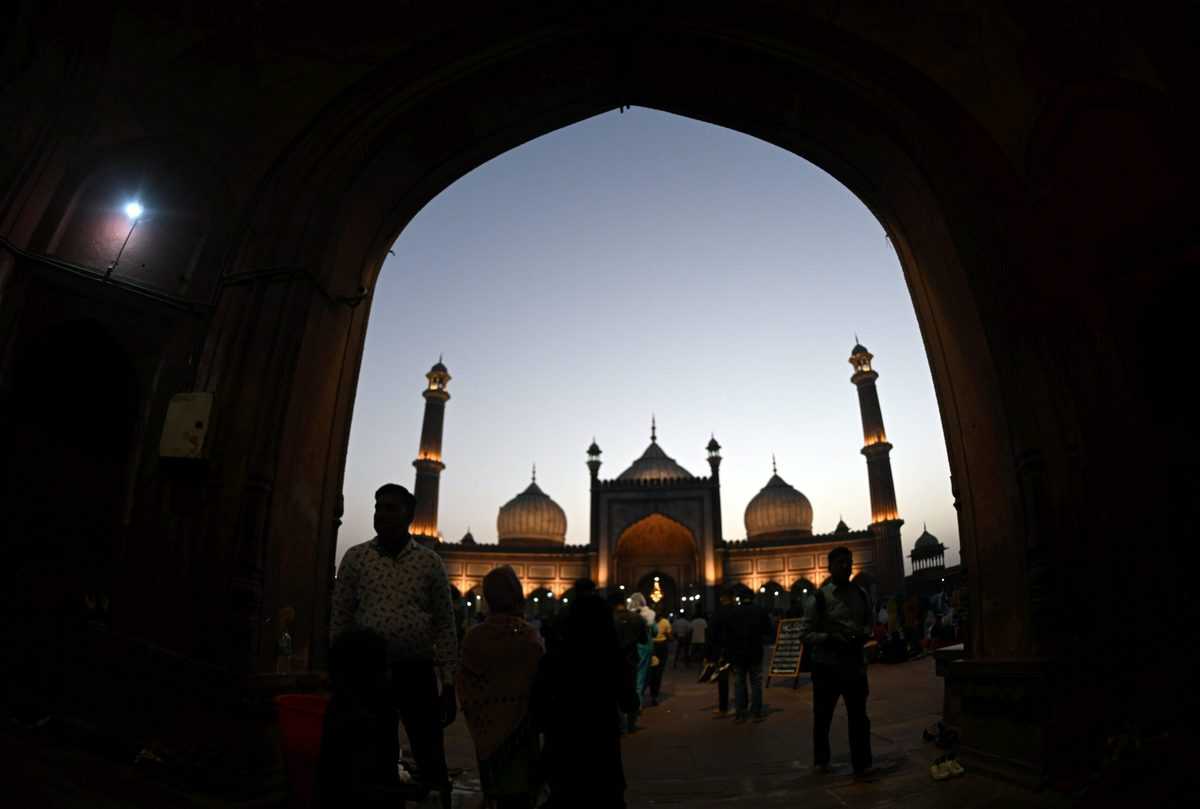
The middle dome and some minarets of Delhi’s historic Jama Masjid suffered damages in the recent hailstorm. Shahi Imam Ahmed Bukhari told media persons that Archeological Survey of India (ASI) stopped taking care of it some time ago. The Delhi Wakf Board is its custodian but the Board has no funds to do restoration works on the iconic site.
Built in 1656 by Mughal emperor Shah Jahan the 366 year-old monument is in dire needs of repairing and restoration.
As far as Archeological Survey of India is concerned, it is not responsible to maintain or do restoration works at Jama Masjid because the monument is not ASI-protected. Delhi Wakf Board manages it but the Board either doesn’t have enough resources or it is not interested to spend money on a monument which is under the control of the Bukharis. I have read reports quoting Ahmed Bukhari that Muslims cannot handover the mosque to ASI because then the ASI may stop daily prayers at the site which carries huge symbolic importance.
After Independence, the issue of maintenance of Jama Masjid went to Pandit Nehru. He made a special grant of Rs 5 lakh to do repairing works. Subsequently, ASI was asked to do restoration works whenever needed. That work stopped months ago.
Bukhari has reportedly written even to PM Modi, requesting him to instruct ASI to do repairing works. But I am told the PM has not replied yet. Historians maintain that Jama Masjid is part of world heritage, one of the most important and architecturally magnificent, functional mosques in the world.
In the current situation, crowd funding only seems the right way to pool in money for its restoration. The Agha Khan Trust, known for restoring many tombs, mausoleums and other heritage buildings can be approached. The Trust can join hands with ASI to save this great monument, the aan and shaan of old Delhi, undoubtedly the most recognisable monument of Shahjahanabad.
Will history and heritage loving Indians rise and do their bit to save this monument? If each one of us just donates just one rupee to the cause–even the hordes of fakirs outside Jama Masjid’s majestic gates can contribute this princely sum–the coffers will overflow and we may not need to beg to the moneybags for financial support. If Jama Masjid, made of red stone, is allowed to die and turn into yet ruins–so many ruins of once fabulously beautiful buildings dot Delhi–it will be a monumental tragedy.
Having known and understood the significance of Jama Masjid for India and the world, I couldn’t stop myself from pouring out my heart. The sun sets on empires. What happened to the Romans, Byzantines and Ottomans have also happened to the Mughals.
But don’t allow the sun to set on a monument that helps give old Delhi its cultural heft, its distinct identity.



